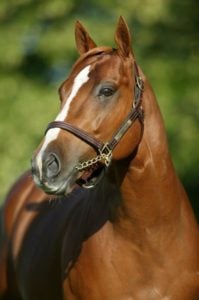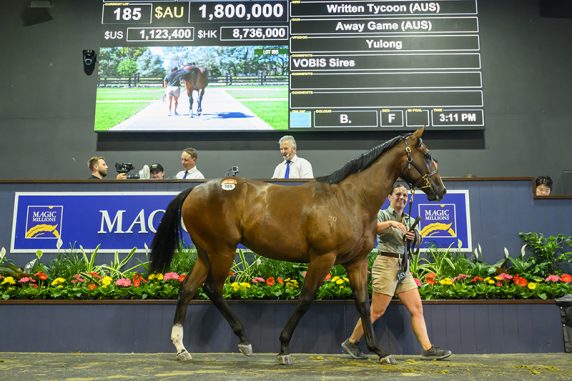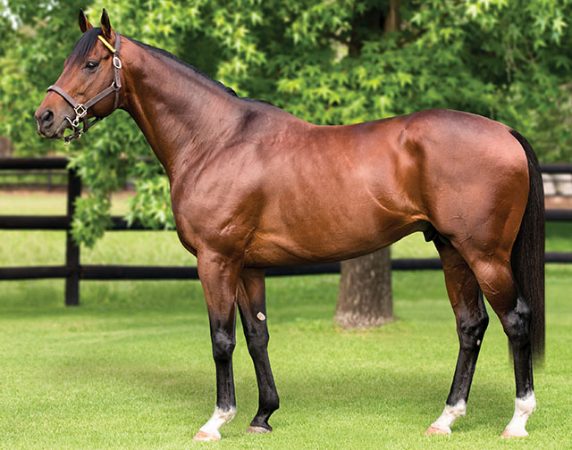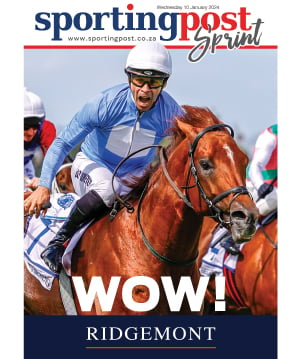For most racing aficionados, the weekends are “TV time” for the marquee events of the sport. Yet ever since Mike de Kock ventured upon his pioneering conquests of the riches of Dubai, Thursday evenings have become a summer “ritual” for South African fans.
The early pace was set by Victory Moon and Ipi Tombi, Asiatic Bay, Right Approach and Jay Peg, while Imbongi, Shea Shea, Soft Falling Rain and Variety Club have etched their names onto the honour roll in more recent times. No horse though, enjoyed greater adulation than the original globe-trotting dual-Group One ace, Linngari, who chalked up Graded stakes performances from Dubai to Dublin, from Paris to Pisa.
With so many top racehorses heading for the paddocks each year, it’s easy to get “swamped” in the plethora of genetic options open to breeders in Europe, the United Kingdom and Ireland. Particularly when your hard-earned Group Ones were anywhere but at the biggest meetings in those realms. Here was a horse though, of Aga Khan breeding and Aga Khan class, capable of competing at the highest level against the best in the world. And the one man who didn’t forget, was the Aga Khan himself.
Twice a Group One hero at 2000 metres, Linngari chalked up a Group 2 victory at 1200 metres, too. Twice the winner of the two races that defined it, Linngari was twice the victor ludorum at the Dubai carnival. Yet who could forget his heads-up, heads-down second in the race that’s announced so many outstanding French stallions, the Gr1 Prix de la Foret, or his agonising runner-up in the Gr1 Duty Free? For that matter, remember his versatility for his gut-busting run in the Gr1 Hong Kong Cup, and his cheque-earning dash in the Gr1 English Champion Stakes? Linngari was a racehorse, no doubt about it.
Which is what earned him his place at the Aga’s Haras de Bonneval, one of Europe’s most esteemed stud farms, for his inaugural season. Thatand a pedigree replete in the traditions of Aga Khan breeding. One of the ten Group One winners by Indian Ridge, the Irish National Stud’s flagship stallion of many years standing, like Dansili and Champs Elysees, Linngari is from a daughter of the former English Derby victor, Khayasi. It’s unlikely too many racehorses the world over have put in Black-type performance in eight different countries, yet Linngari has had to rely on the patronage of a smattering of private breeders for his support in the breeding shed; that’s the price you pay when the post comes a stride too soon in the Prix de la Foret (Gr.1).
There’s an old saying in this game, that “class will out”, and the testimony for the truth of it lies in Linngari’s four Stakes winners and seven Stakes performers already, alongside a lengthy schedule four, five, six and eight time winners. Those runners excelled enough to have Linngari second only to the emerging star of French breeding, Le Havre, by 3 year old earnings in 2014.
That Linngari joins Capetown Noir on the “new boys” roster at Summerhill this season, is a salute to the admiration the farm holds for all things “Aga Khan” and to the value of a relationship with a breeder whose horses are as good as family. Linngari owes everything to Rupert Plersch; his racing achievements, his stud career and now his relocation.
“Our eyes have been fixed on Linngari ever since those “heady” days in Dubai; we followed him to Hong Kong, Germany, France, England, Ireland, Italy and Istanbul in the hope he’d make it here one day. At last it’s a reality, and to have him, one of the best international campaigners of his era, come to us in the same year as one of South Africa’s best racehorses of his generation, is a signal occasion in a long history of landmarks of our time.” Greig Muir should know. He’s been stallion master at Summerhill for most of its 36 year existence.










